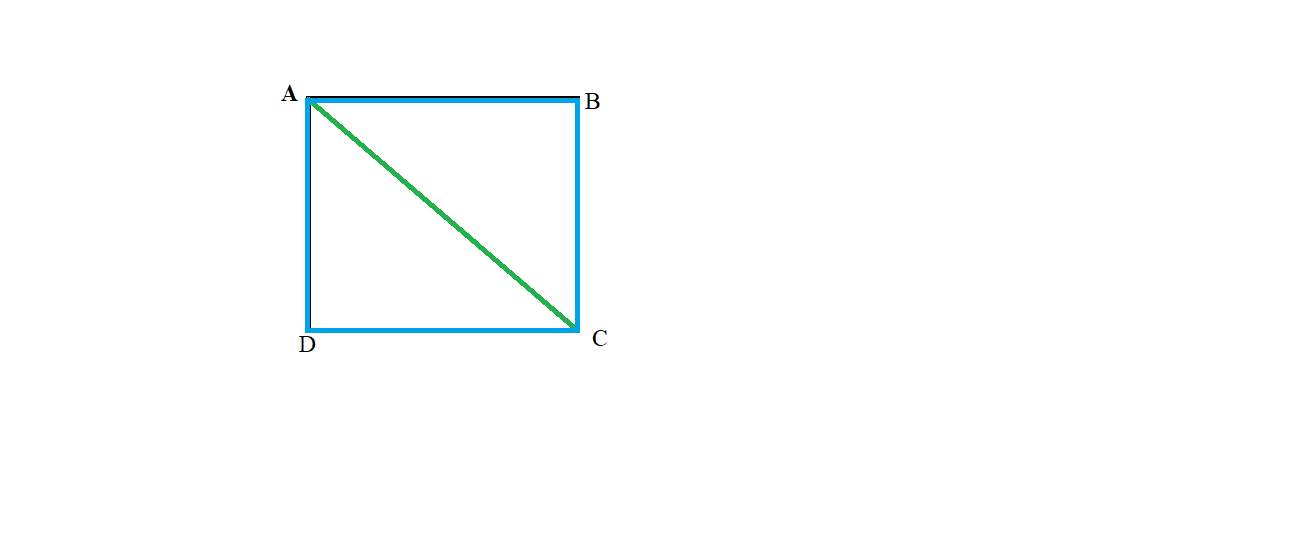
A farmer moves along the boundary of a square field of side 10 m in 40 s. What will be the magnitude of displacement of the farmer at the farmer at the end of 2 minutes 20 seconds from his initial position?
Answer
445k+ views
11 likes
Hint: Draw the diagram and write the given data. Also find the total time in seconds and total distance travelled in a given time period. Then find displacement.
Complete step by step answer:

Displacement is the difference between the final position and initial position of a particle or any object. Here first we will draw the diagram.
Perimeter of square =
Where a = side of square
Total time taken to travel 40 m is 40 s
So time taken to travel 1 m is
Since the farmer travels 2 minutes 20 seconds.
2 minutes 20 seconds =
The distance travelled by farmer in 140 s is
Now, number of rotation to cover 140m along the boundary = total distance perimeter
=
That is 3 complete rotations and half rotation
After 3.5 rotations, the farmer will reach at point C
So, the displacement will be AC
AC length can be calculate by using Pythagoras theorem
So after 2 minutes 20 seconds the displacement of the farmer will be equal to
Note: By mistake students can calculate distance instead of displacement. So, Students should remember the difference between distance and displacement. Here distance is 140m but displacement is
Complete step by step answer:

Displacement is the difference between the final position and initial position of a particle or any object. Here first we will draw the diagram.
Perimeter of square =
Where a = side of square
Total time taken to travel 40 m is 40 s
So time taken to travel 1 m is
Since the farmer travels 2 minutes 20 seconds.
2 minutes 20 seconds =
The distance travelled by farmer in 140 s is
Now, number of rotation to cover 140m along the boundary = total distance perimeter
=
That is 3 complete rotations and half rotation
After 3.5 rotations, the farmer will reach at point C
So, the displacement will be AC
AC length can be calculate by using Pythagoras theorem
So after 2 minutes 20 seconds the displacement of the farmer will be equal to
Note: By mistake students can calculate distance instead of displacement. So, Students should remember the difference between distance and displacement. Here distance is 140m but displacement is
Latest Vedantu courses for you
Grade 10 | CBSE | SCHOOL | English
Vedantu 10 CBSE Pro Course - (2025-26)
School Full course for CBSE students
₹37,300 per year
Recently Updated Pages
Master Class 12 Economics: Engaging Questions & Answers for Success

Master Class 12 Maths: Engaging Questions & Answers for Success

Master Class 12 Biology: Engaging Questions & Answers for Success

Master Class 12 Physics: Engaging Questions & Answers for Success

Master Class 12 Business Studies: Engaging Questions & Answers for Success

Master Class 12 English: Engaging Questions & Answers for Success

Trending doubts
Which one is a true fish A Jellyfish B Starfish C Dogfish class 10 biology CBSE

Which tributary of Indus originates from Himachal Pradesh class 10 social science CBSE

Distinguish between ordinary light and laser light class 10 physics CBSE

What is the past tense of read class 10 english CBSE

In which type of rock coal is found A Igneous rock class 10 social science CBSE

What is the past participle of wear Is it worn or class 10 english CBSE




